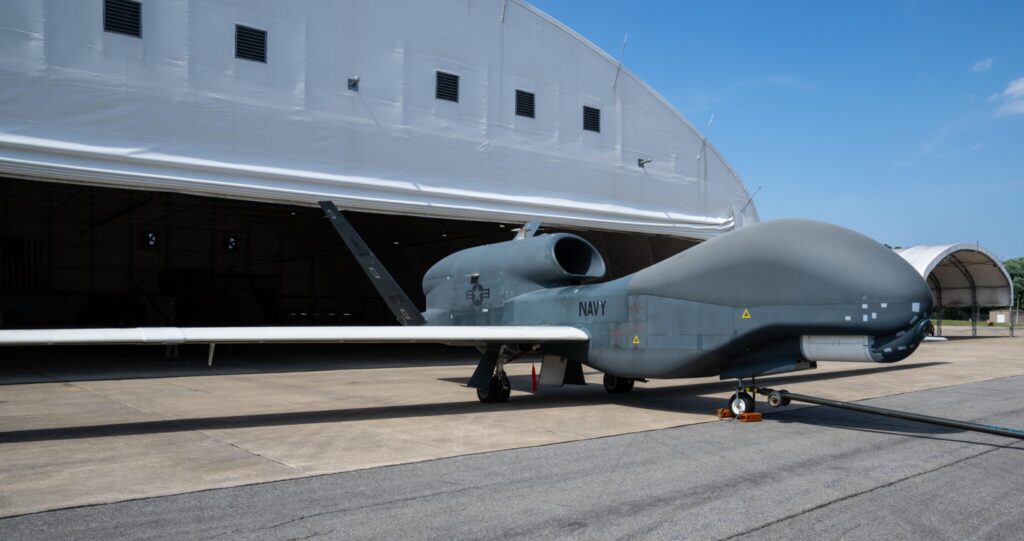
ARLINGTON, Va. — The Navy has transferred its three remaining RQ-4A BAMS-D high-altitude, long-endurance unmanned aerial vehicles (UAVs) to the National Aeronautics and Space Administration (NASA).
“All three currently reside at NASA’s Armstrong Flight Research Center and will be operated by NASA for the DoD Test Resource Management Center (TRMC, the new aircraft custodian),” said Jamie Cosgrove, a spokeswoman for the Navy’s Program Executive Office – Strike and Unmanned Aviation and Strike Weapons. “The remaining ground control equipment for the system, as well as all the RQ-4A non-payload spares, have likewise been transferred to TRMC.”
The last of the three RQ-4As had returned to its home base, Naval Air Station Patuxent River, Maryland, last summer from deployment to the U.S. 5th Fleet area of responsibility, culminating a 13-year span of operations that began as a six-month experiment.
The Navy had deployed the RQ-4A to Southwest Asia since 2009 as a component of the BAMS-D program. Five Block 10 RQ-4As were acquired from the U.S. Air Force and were based at Patuxent River and operated in sequence over the years by detachments of Patrol Reconnaissance Wings 5, 2 and 11. The detachment kept at least one RQ-4A in the rotation to a base in the Persian Gulf region. One was lost in a mishap in Maryland in June 2012. Another was shot down June 19, 2019, in an unprovoked attack in international airspace over the Strait of Hormuz by an Iranian surface-to-air missile.
BAMS-D provided more than 50% of maritime intelligence, surveillance and reconnaissance in theater accruing over 42,500 flight hours in 2,069 overseas missions, the Navy said.
In the Navy’s 2022 budget request, divestment of the RQ-4A Global Hawk Broad-Area Maritime Surveillance-Demonstrator UAV had been planned for acceleration from 2023 to 2022, with the savings invested in higher priorities.
The BAMS-D is being replaced by a Global Hawk derivative, the MQ-4C Triton, which has been deployed to the Western Pacific in an Early Operational Capability deployment. The Triton with an upgraded sensor capability will be deployed in 2023.
- SECNAV Advocates Increased Legal Immigration to Increase Shipbuilder Workforce - April 23, 2024
- Insitu Going Strong at 30, Focusing on Maritime Operations - April 8, 2024
- Navy Awards Boeing Additional Funds for MQ-25 Drones for Testing - April 3, 2024






